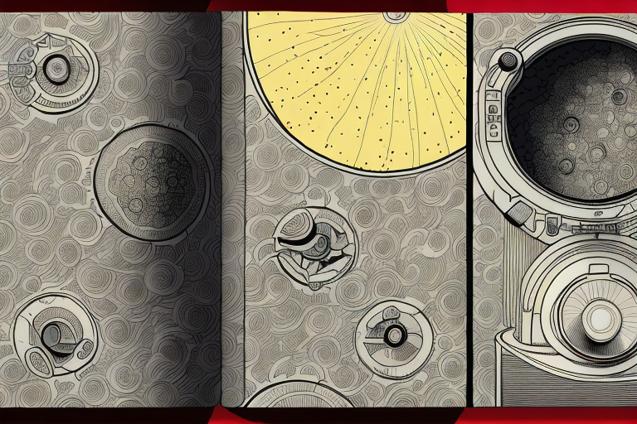
Discover the fascinating world of astronomy and stargazing from the comfort of your boat with our top picks for beginner astronomy books.
The Top Astronomy Books for Beginners
Welcome to our latest addition to the Entertainment and Hobbies section of our adventurous website! As you embark on your sailing journey with your family, you’ll have the unique opportunity to experience the beauty of the night sky from the open sea. Stargazing and astronomy can be a fascinating and educational hobby for the entire family, and there’s no better time to start than now.
To help you begin your celestial journey, we’ve compiled a list of the top astronomy books for beginners. These books will provide you with the knowledge and inspiration you need to explore the wonders of the universe from the deck of your boat.
1. NightWatch: A Practical Guide to Viewing the Universe by Terence Dickinson
NightWatch is an excellent starting point for anyone new to astronomy. This comprehensive guide covers everything you need to know to get started, from choosing the right telescope to understanding the basics of the night sky. The book is filled with easy-to-understand explanations, star charts, and beautiful illustrations that will help you navigate the heavens with ease.
Key Features:
- Detailed star charts for both the Northern and Southern Hemispheres
- Tips on choosing and using telescopes and binoculars
- A guide to observing the Moon, planets, and other celestial objects
- Information on meteor showers, eclipses, and other astronomical events
2. The Stars: A New Way to See Them by H.A. Rey
You may recognize H.A. Rey as the author of the beloved children’s book series, Curious George. However, Rey was also an avid amateur astronomer, and his passion for the stars shines through in this classic guide. The Stars offers a unique and intuitive approach to learning the constellations, making it an excellent choice for beginners of all ages.
Key Features:
- Simplified constellation diagrams that are easy to understand and remember
- A comprehensive guide to the major constellations and their mythology
- Tips for locating and identifying stars, planets, and other celestial objects
- Seasonal star charts for both the Northern and Southern Hemispheres
3. Turn Left at Orion: Hundreds of Night Sky Objects to See in a Home Telescope - and How to Find Them by Guy Consolmagno and Dan M. Davis
Turn Left at Orion is a must-have for anyone with a telescope or binoculars. This practical guide provides step-by-step instructions for locating and observing hundreds of celestial objects, from the Moon and planets to distant galaxies and nebulae. The book is filled with detailed star charts, sketches, and descriptions that will help you make the most of your stargazing sessions.
Key Features:
- Detailed instructions for finding and observing over 100 celestial objects
- Tips on choosing and using telescopes and binoculars
- Information on the Moon, planets, stars, galaxies, and more
- Seasonal star charts for both the Northern and Southern Hemispheres
4. Astronomy for Dummies by Stephen P. Maran
Part of the popular “For Dummies” series, Astronomy for Dummies is a comprehensive and accessible introduction to the world of astronomy. The book covers a wide range of topics, from the basics of the night sky to the latest discoveries in astrophysics. With its clear explanations and helpful illustrations, this book is an excellent choice for anyone looking to learn more about the universe.
Key Features:
- An overview of the night sky and its constellations
- Information on telescopes, binoculars, and other observing equipment
- A guide to observing the Moon, planets, and other celestial objects
- An introduction to the latest discoveries in astronomy and astrophysics
5. 50 Things to See with a Small Telescope by John A. Read
If you’re looking for a compact and easy-to-use guide to stargazing, 50 Things to See with a Small Telescope is an excellent choice. This book focuses on the most interesting and accessible celestial objects, making it perfect for beginners and casual observers. With its clear instructions and helpful illustrations, you’ll be able to locate and enjoy these celestial sights in no time.
Key Features:
- A selection of 50 fascinating celestial objects to observe with a small telescope
- Clear instructions for locating and observing each object
- Tips on choosing and using telescopes and binoculars
- Information on the Moon, planets, stars, and more
6. The Backyard Astronomer’s Guide by Terence Dickinson and Alan Dyer
The Backyard Astronomer’s Guide is a comprehensive and practical guide to amateur astronomy. This book covers everything you need to know to get started, from choosing the right equipment to understanding the basics of the night sky. With its detailed star charts, helpful tips, and beautiful illustrations, this book is an invaluable resource for anyone looking to explore the heavens from their own backyard.
Key Features:
- A guide to choosing and using telescopes, binoculars, and other observing equipment
- Detailed star charts for both the Northern and Southern Hemispheres
- Tips for observing the Moon, planets, and other celestial objects
- Information on astrophotography, meteor showers, eclipses, and more
As you set sail on your family’s adventure, don’t forget to pack one or more of these fantastic astronomy books. They’ll provide you with the knowledge and inspiration you need to explore the wonders of the universe from the comfort of your boat. Happy stargazing!